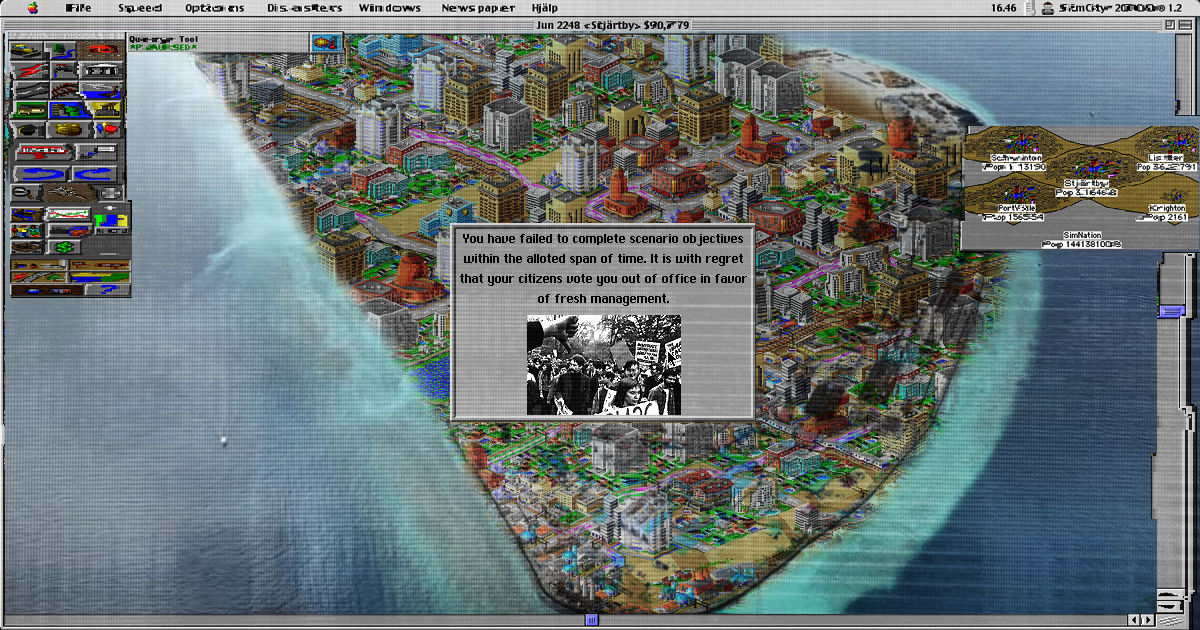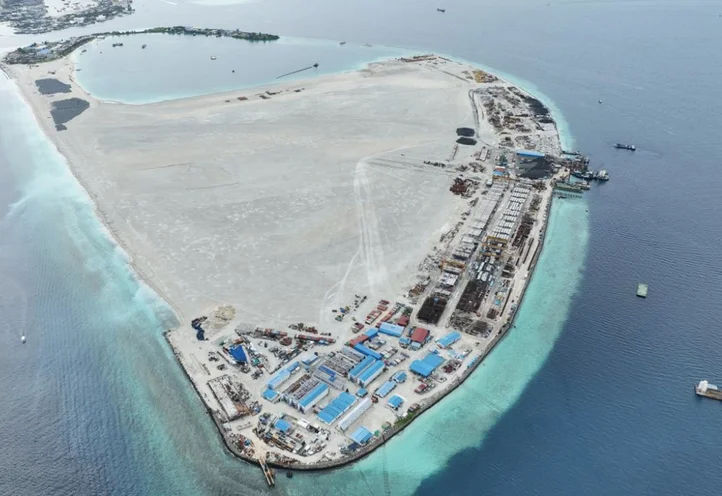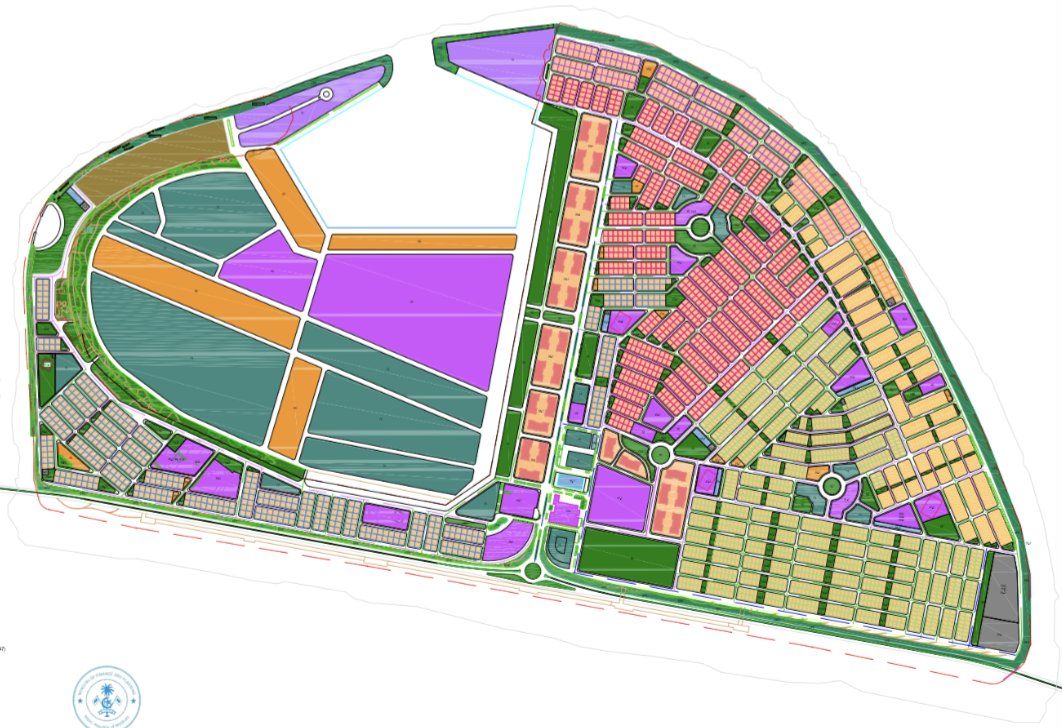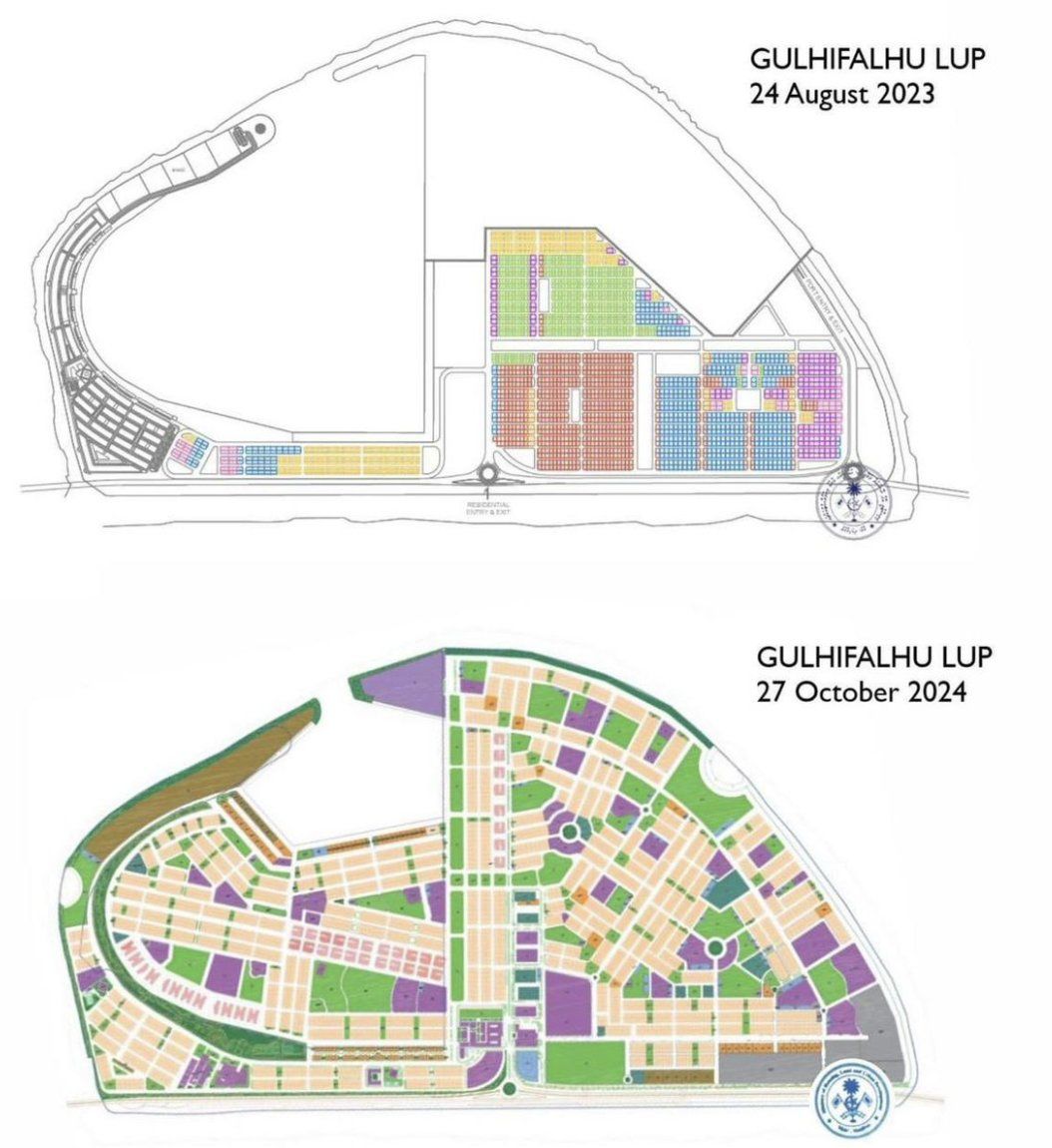Gulhifalhu plan creates "urban disaster" with population density exceeding Malé
The proposed solution risks repeating Malé's overcrowding mistakes.

Artwork: Dosain
10 Jun 2025, 5:27 PM
The new Gulhifalhu land use plan is engineered for "urban disaster" with catastrophically inadequate infrastructure for a population density exceeding the overcrowded Malé, a damning technical analysis commissioned by the Malé City Council has warned.
The Gulhifalhu plan was redrawn to accommodate all land plots awarded under the previous government's Binveriya scheme within the currently reclaimed area, Housing Minister Dr Abdulla Muththalib announced in mid-May. The reallocation from land that has yet to be reclaimed would expedite the delayed handover of more than 3,500 plots, he said.
The new plan accommodates 41,008 housing units, the analysis calculated – assuming six-storey buildings with three-bedroom apartments – translating to a conservative estimate of 150,000 residents and a population density of 719 people per hectare, surpassing Malé's 684 people per hectare.
“Unlike earlier proposals that incorporated green spaces and better distribution of amenities, the current plan concentrates development within the recently reclaimed portion of Gulhifalhu,” the report observed.
“This results in unnecessary congestion and disregards opportunities for a more integrated approach across Hulhumalé Phase 3, Gulhifalhu, Giraavaru Falhu, Rasmalé, and even Uthuruthilafalhu,” it concluded, referring to manmade islands created through land reclamation by successive administrations to alleviate the capital’s acute housing crisis.
The report advised a “more holistic, region-wide planning strategy would provide healthier and more equitable urban outcomes for residents.” It warned that future Gulhifalhu inhabitants could face a perfect storm of urban planning failures: only 10 schools for 45,000 students (when 23 schools would be required), and green space allocation seven times below World Health Organisation standards at just 0.85 square metres per person. But green spaces were placed within 200m walking distance, "which supports accessibility despite the low overall provisions," the report noted.
Only one percent of the reclaimed portion was designated for essential utilities, well below the international minimum of three to five percent. The planned roads ignore basic urban hierarchy principles and there was no provision for public transport, the report added.
The current plan would move residents “from one matchbox to another,” a participant observed at a city council meeting with recipients of Gulhifalhu land plots on May 28.
In a presentation at the meeting, urban planner Hussein Ziyath suggested that the entire Greater Malé Region from Hulhumalé to Giraavaru should be planned together and made public. “When people exchange Gulhifalhu land for Giraavaru, they actually need to know how those areas will be developed," he said.
Over the years, new administrations have overhauled land use plans and major housing projects announced by previous governments, causing years of planning to go to waste. The original Hulhumalé development plan – devised in the late 1990s as a solution to Malé's congestion – envisioned a population density of 329 people per hectare. But the figure currently stands at 550 people per hectare.

Bait and switch
In April last year, 1,347 plots awarded from the Giraavaru lagoon west of Thilafushi were transferred to Gulhifalhu. A lottery draw was conducted among applicants who took up the new government’s offer to shift their future homes closer to Malé.
The recipients of Giraavaru land plots were “manipulated” into switching to Gulhifalhu, Shamman Rasheed from the Malé Rahvehige Jamiyyah, an association representing native residents of the capital, contended on the Maldives Independent’s Ithuru Vaahaka podcast last week.
The applicants were told they would be allocated plots from new land to be reclaimed in Gulhifalhu, “but at the end of the day, without anyone knowing anything, everyone has been brought and dumped into the presently reclaimed land,” said Shamman.
Gulhifalhu residents would face congestion similar to Malé in 10 to 15 years, he warned. “This was done very regrettably. People were shown a dream. But what was done wasn’t in accordance with that dream,” he said.
The association decried the lack of public consultation in redrawing the land use plan. Dr Ali Haidar, the former housing minister, carried out discussions at the Maldives National University three or four times, but his successor Dr Muththalib did not do so, according to Shamman.
The housing minister could not be reached for comment at the time of publication.
Following the publication of the revised Gulhifalhu plan, a lottery draw was completed on May 31, despite strong opposition from Malé Mayor Adam Azim and city council members, who called for a complete revamp based on wider consultations.
At the city council meeting with Gulhifalhu landowners, the mayor criticised the current plan's lack of adequate facilities such as parks, mosques, hospitals and schools. The government failed to follow modern urban planning practices, he said.
"Even Hulhumalé is good as it is. But we don't want to make it worse than that. Please study the whole thing again from the beginning," Azim said.


Discussion
No comments yet. Be the first to share your thoughts!
No comments yet. Be the first to join the conversation!
Join the Conversation
Sign in to share your thoughts under an alias and take part in the discussion. Independent journalism thrives on open, respectful debate — your voice matters.




